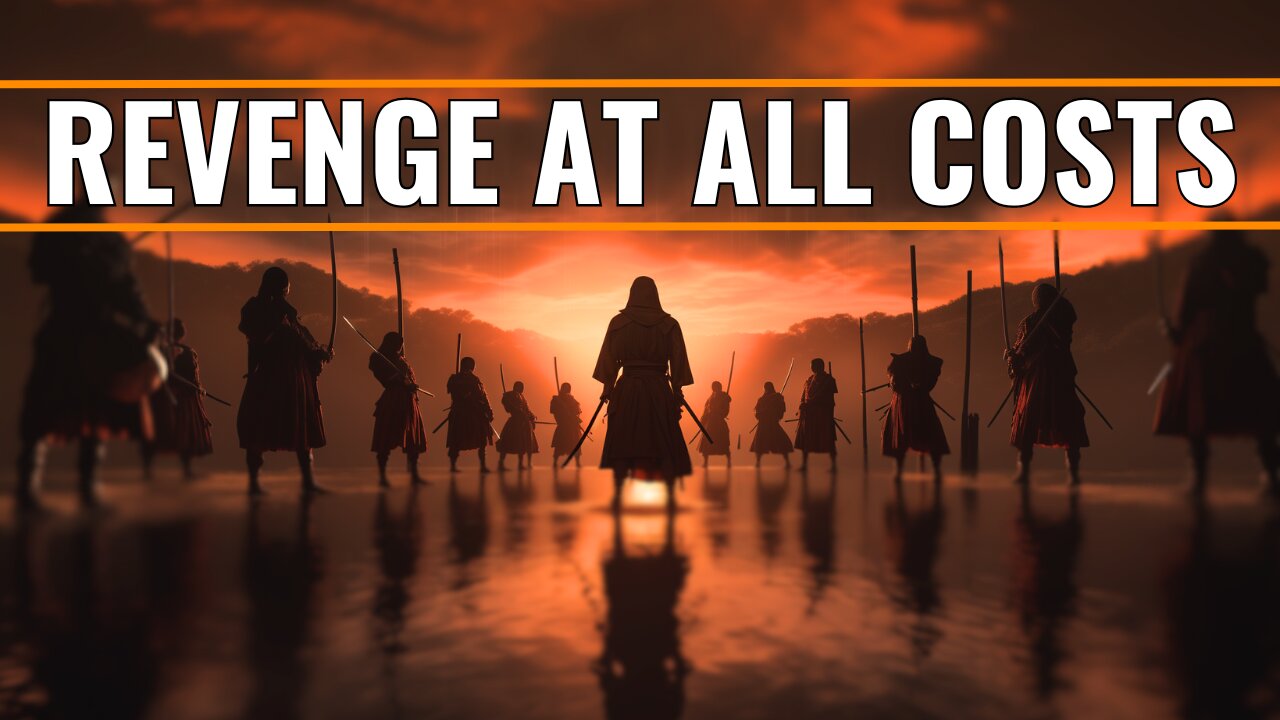Premium Only Content

What Did 47 Samurai (Ronin) Do When Their Lord Was Executed?
Disclaimer: Due to a limited quantity of media depicting these events, we have substituted footage and imagery where appropriate. We have also tried to avoid using too much footage from the film '47 Ronin', as this movie delves into the realm of fantasy, despite having a historical inspiration.
Join this channel to get access to perks:
https://www.youtube.com/channel/UClJgKf1Xb0xrRO7-r9J3bqQ/join
How far would you go for revenge? Think about it for a moment – because the story of the 47 Ronin may make you reconsider your ability to hold a grudge .
It all began with Asano Naganori, a lord provoked to the brink by Kira Yoshinaka's insults, leading him to commit a taboo act of violence within Edo Castle's sacred walls.
_______
The Tokugawa Shogunate period, a time of relative peace yet rigid class structures, was the backdrop for the 47 Ronin's tale.
The Shogunate, ruling from Edo (now Tokyo), had consolidated power, bringing the daimyo, feudal lords, under its control.
It was a period marked by a strict social hierarchy, with the samurai class serving as the military and bureaucratic backbone of this societal structure.
Daimyos were powerful regional lords, commanding private armies of samurai.
These samurai were not just warriors but also adherents of Bushido, a code emphasizing loyalty, honor, and martial arts skills.
In this system, the Shogun was the de facto ruler of Japan, although the Emperor remained the figurehead.
The Shogunate's authority was maintained through a combination of political acumen and military might, with the samurai serving as the enforcers of their rule.
How far would you go for revenge? Think about it for a moment – because the story of the 47 Ronin may make you reconsider your ability to hold a grudge.
It all began with Asano Naganori, a lord provoked to the brink by Kira Yoshinaka's insults, leading him to commit a taboo act of vi0lence within Edo Castle's sacred walls.
_______
The Tokugawa Shogunate period, a time of relative peace yet rigid class structures, was the backdrop for the 47 Ronin's tale.
The Shogunate, ruling from Edo (now Tokyo), had consolidated power, bringing the daimyo, feudal lords, under its control.
It was a period marked by a strict social hierarchy, with the samurai class serving as the military and bureaucratic backbone of this societal structure.
Daimyos were powerful regional lords, commanding private armies of samurai.
These samurai were not just warriors but also adherents of Bushido, a code emphasizing loyalty, honor, and martial arts skills.
In this system, the Shogun was the de facto ruler of Japan, although the Emperor remained the figurehead.
The Shogunate's authority was maintained through a combination of political acumen and military might, with the samurai serving as the enforcers of their rule.
How far would you go for revenge? Think about it for a moment – because the story of the 47 Ronin may make you reconsider your ability to hold a grudge.
It all began with Asano Naganori, a lord provoked to the brink by Kira Yoshinaka's insults, leading him to commit a taboo act of violence within Edo Castle's sacred walls.
_______
The Tokugawa Shogunate period, a time of relative peace yet rigid class structures, was the backdrop for the 47 Ronin's tale.
The Shogunate, ruling from Edo (now Tokyo), had consolidated power, bringing the daimyo, feudal lords, under its control.
It was a period marked by a strict social hierarchy, with the samurai class serving as the military and bureaucratic backbone of this societal structure.
Daimyos were powerful regional lords, commanding private armies of samurai.
These samurai were not just warriors but also adherents of Bushido, a code emphasizing loyalty, honor, and martial arts skills.
In this system, the Shogun was the de facto ruler of Japan, although the Emperor remained the figurehead.
The Shogunate's authority was maintained through a combination of political acumen and military might, with the samurai serving as the enforcers of their rule.
How far would you go for revenge? Think about it for a moment – because the story of the 47 Ronin may make you reconsider your ability to hold a grudge.
It all began with Asano Naganori, a lord provoked to the brink by Kira Yoshinaka's insults, leading him to commit a taboo act of violence within Edo Castle's sacred walls.
_______
The Tokugawa Shogunate period, a time of relative peace yet rigid class structures, was the backdrop for the 47 Ronin's tale.
The Shogunate, ruling from Edo (now Tokyo), had consolidated power, bringing the daimyo, feudal lords, under its control.
It was a period marked by a strict social hierarchy, with the samurai class serving as the military and bureaucratic backbone of this societal structure.
Daimyos were powerful regional lords, commanding private armies of samurai.
T
-
 9:22
9:22
Colion Noir
5 hours agoArmed Woman Drags Gunman Out of Store Before Firing Two Shots
56.1K28 -
 LIVE
LIVE
Jeff Ahern
1 hour agoThe Saturday Show with Jeff Ahern
68 watching -
 44:34
44:34
Chris Harden
2 days agoWhat Happened to Rock Island, Illinois?
231 -
 30:56
30:56
Advanced Level Diagnostics
6 days ago2004 Chevy Silverado - Won't Shut Off!
34 -
 7:05
7:05
Spooky Grandpa's Scary Stories
7 months agoThose Who Linger - Halloween, Ghost Stories, Horror, Haunted, Cemetery, Folklore
1.06K14 -
 2:23
2:23
Memology 101
1 day ago $0.21 earnedAOC spits completely made-up BULLSH*T during UNHINGED anti-Republican rant
70718 -
 1:55
1:55
NAG Daily
19 hours agoHEADLINES FOR THE JILTED MASSES W/GreenMan Reports
58 -
 LIVE
LIVE
GrimmHollywood
3 hours ago🔴LIVE • GRIMM HOLLYWOOD • ARC RAIDERS • DAY 2 •
119 watching -
 3:02:36
3:02:36
CassaiyanGaming
4 hours ago🟢LIVE - BATTLEFIELD 6 - MEDIC SHIFT - Doing My Duty
15.4K -
![Mr & Mrs X - ICE Is A Threat To The [DS] Agenda, The ICE Insurgency Will Fail - EP 12](https://1a-1791.com/video/fww1/b2/s8/1/o/V/N/r/oVNrz.0kob-small-Mr-and-Mrs-X-ICE-Is-A-Threa.jpg) 46:10
46:10
X22 Report
5 hours agoMr & Mrs X - ICE Is A Threat To The [DS] Agenda, The ICE Insurgency Will Fail - EP 12
84.1K40